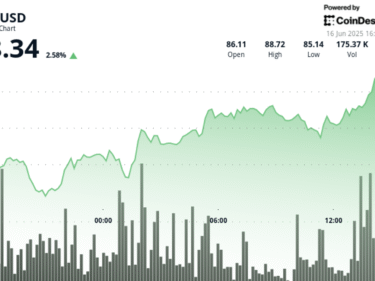How to Read a Blockchain Explorer
Blockchain technology, the backbone of cryptocurrencies, is often described as complex and opaque. However, blockchain explorers provide a transparent window into this world, offering detailed insights into transactions, blocks, and addresses. Whether you are an investor, developer, or enthusiast, understanding how to read a blockchain explorer is crucial. This guide will walk you through the essential features and functionalities of a blockchain explorer, empowering you to navigate and interpret blockchain data with ease.
What is a Blockchain Explorer?
A blockchain explorer is an online tool that allows users to search and view detailed information about blocks, transactions, and addresses on a blockchain. Think of it as a search engine for blockchain networks. It helps users verify transactions, check balances, and explore the history of any blockchain address or transaction.
Key Features of a Blockchain Explorer
- Homepage Overview:
- The homepage typically displays the latest blocks and transactions. This gives you a quick snapshot of the network’s activity.
- Search Functionality:
- A search bar is prominently featured, allowing you to input a transaction ID (TXID), block number, or wallet address to find specific information.
- Blocks:
- Block Number: Each block has a unique number or height, indicating its position in the blockchain.
- Timestamp: The date and time when the block was mined.
- Number of Transactions: The total number of transactions included in the block.
- Miner: The entity or pool that mined the block.
- Hash: A unique identifier for the block, created through cryptographic hashing.
- Previous Block Hash: The hash of the preceding block, linking them together in the chain.
- Difficulty and Size: Information about the computational effort required to mine the block and its data size.
- Transactions:
- Transaction ID (TXID): A unique identifier for each transaction.
- Status: Whether the transaction is confirmed or pending.
- Timestamp: When the transaction was processed.
- Sender and Receiver Addresses: The wallet addresses involved in the transaction.
- Amount: The quantity of cryptocurrency sent.
- Fees: The transaction fee paid to the miners.
- Addresses:
- Balance: The total amount of cryptocurrency held by the address.
- Transaction History: A list of all transactions involving the address.
- Labels: Sometimes, known addresses are labeled for easier identification (e.g., exchanges, wallets).
How to Use a Blockchain Explorer
Step 1: Access a Blockchain Explorer
Choose a blockchain explorer based on the cryptocurrency you are interested in. Popular options include:
- Bitcoin: Blockchain.com, Blockchair, Blockstream
- Ethereum: Etherscan, Ethplorer
- Litecoin: Blockchair, Litecoin Block Explorer
Step 2: Search for Information
Use the search bar to enter a transaction ID, block number, or wallet address. For example, if you want to check a transaction, paste the TXID into the search bar and hit enter.
Step 3: Interpret the Data
- Transaction Details: Review the transaction ID, confirmation status, sender and receiver addresses, amount transferred, and fees.
- Block Details: Look at the block number, timestamp, miner, number of transactions, and hash.
- Address Details: Check the balance and transaction history for a specific wallet address.
Step 4: Verify Transactions
To verify a transaction, ensure the status is confirmed and check the number of confirmations. Most exchanges and wallets require a certain number of confirmations before considering a transaction complete.
Advanced Features
Some blockchain explorers offer additional features such as:
- Charts and Analytics: Visual representations of network activity, such as transaction volume, hash rate, and difficulty.
- APIs: For developers, APIs allow for programmatic access to blockchain data.
- Smart Contract Interaction: On platforms like Ethereum, explorers can show details about smart contracts and allow interaction with them.
Conclusion
A blockchain explorer is an invaluable tool for anyone involved in the cryptocurrency space. By understanding how to read and interpret the data presented, you can gain deeper insights into the blockchain network, verify transactions, and monitor addresses with confidence. As you become more familiar with using these explorers, you’ll be better equipped to navigate the ever-evolving landscape of blockchain technology.



